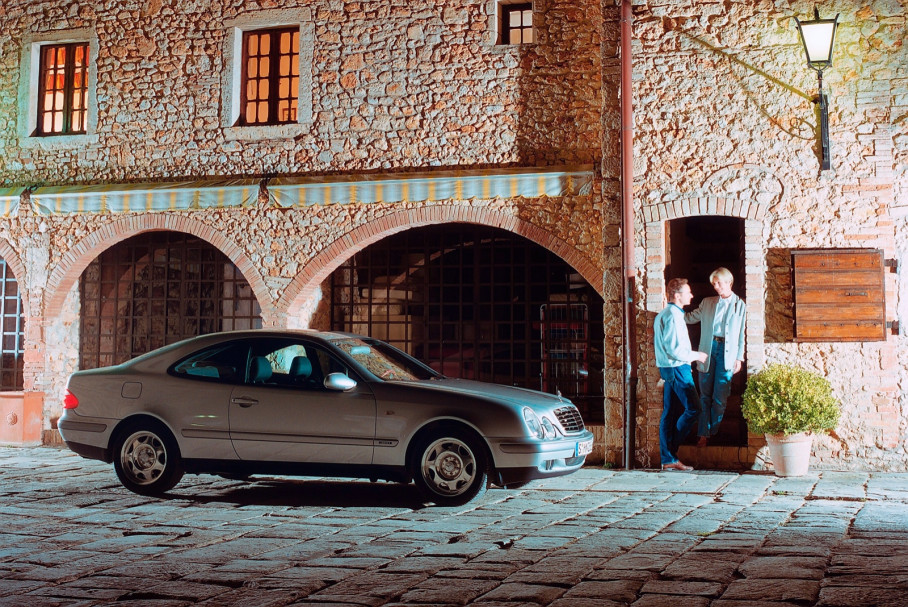

Stuttgart, January 1997 – In the midst of a dynamic product campaign, Mercedes-Benz unveiled the CLK model series 208, marking a significant milestone in the brand's history. Following the successful debut of the compact roadster SLK (R 170) in April 1996, the CLK made its grand entrance at the North American International Auto Show (NAIAS) in Detroit. This new vehicle highlighted Mercedes-Benz's commitment to innovation and expansion, targeting new and younger audiences.
A Bold New Direction for Mercedes-Benz
The CLK's debut in Detroit demonstrated Mercedes-Benz's serious intent to penetrate new market segments. The brand aimed to reach younger customers with innovative vehicles, enhancing its market presence. The CLK was part of a broader strategy, which included the introduction of the A-Class and M-Class later in 1997, followed by the CLK Cabriolet in 1998. This expansion was a bold move, setting the stage for future models like the SLR McLaren (2003) and the CLS (2004), which emphasized "fascination" and "emotion." This strategy has continued, solidifying Mercedes-Benz as the world's leading luxury car brand.
The Genesis of the CLK
The journey of the CLK began in March 1993 at the Geneva Motor Show, where Mercedes-Benz showcased a sleek four-seater coupé with a distinctive "four-eyed" design. This design, featuring four elliptical headlights and a slim radiator grille, set the stage for the future. The CLK's fastback rear and large glass tailgate further captured the public's imagination. This concept car was the company's first show car, setting a precedent for future designs.
The four-eyed design first appeared in the E-Class 210 series in 1995, affirming the public's positive response to the new design direction. The CLK's debut in Detroit four years later proved how close the concept was to the final production model, showcasing Mercedes-Benz's commitment to innovative design.
Technical Excellence
Technically, the CLK borrowed elements from the C-Class Saloon, particularly its floor assembly and aggregates. However, numerous unique details and the new body design set the CLK apart. Available in "Sport" and "Elegance" lines, the CLK featured a wealth of standard equipment, including traction control (TCS), exterior temperature display, leather steering wheel, remote boot lid opening, heat-insulating glass, and a split-folding rear seat backrest.
The model range was extensive, from the four-cylinder CLK 200 (100 kW/136 hp) to the top-of-the-line CLK 430 (205 kW/279 hp) and CLK 55 AMG (255 kW/347 hp) with eight-cylinder engines. The CLK was well-received, with 233,367 units produced at the Bremen plant over five years, surpassing the production of the 124 series coupés by 65%.
A Lasting Legacy
The first CLK played a crucial role in Mercedes-Benz's product campaign, which began in the late 1980s. Top executives like Werner Niefer, Helmut Werner, and Jürgen Hubbert envisioned a dynamic brand transformation. The Mercedes-Benz 500 E (W 124), introduced in 1990, was an early indication of this strategy.
Motorsport also contributed to this success, as AMG became known as the "sports badge" of Mercedes-Benz. This period marked a significant shift in the brand's image, adding sportiness to its reputation for reliability, quality, and safety. The calculated risks of the product campaign paid off, driven by a passion for automotive excellence that has defined Mercedes-Benz for over 135 years.
For those looking to explore the legacy and innovation of Mercedes-Benz, including the iconic CLK, Auto Trader UAE offers a wide selection of used Mercedes-Benz cars in Dubai. Visit Auto Trader UAE to find your perfect luxury vehicle today.